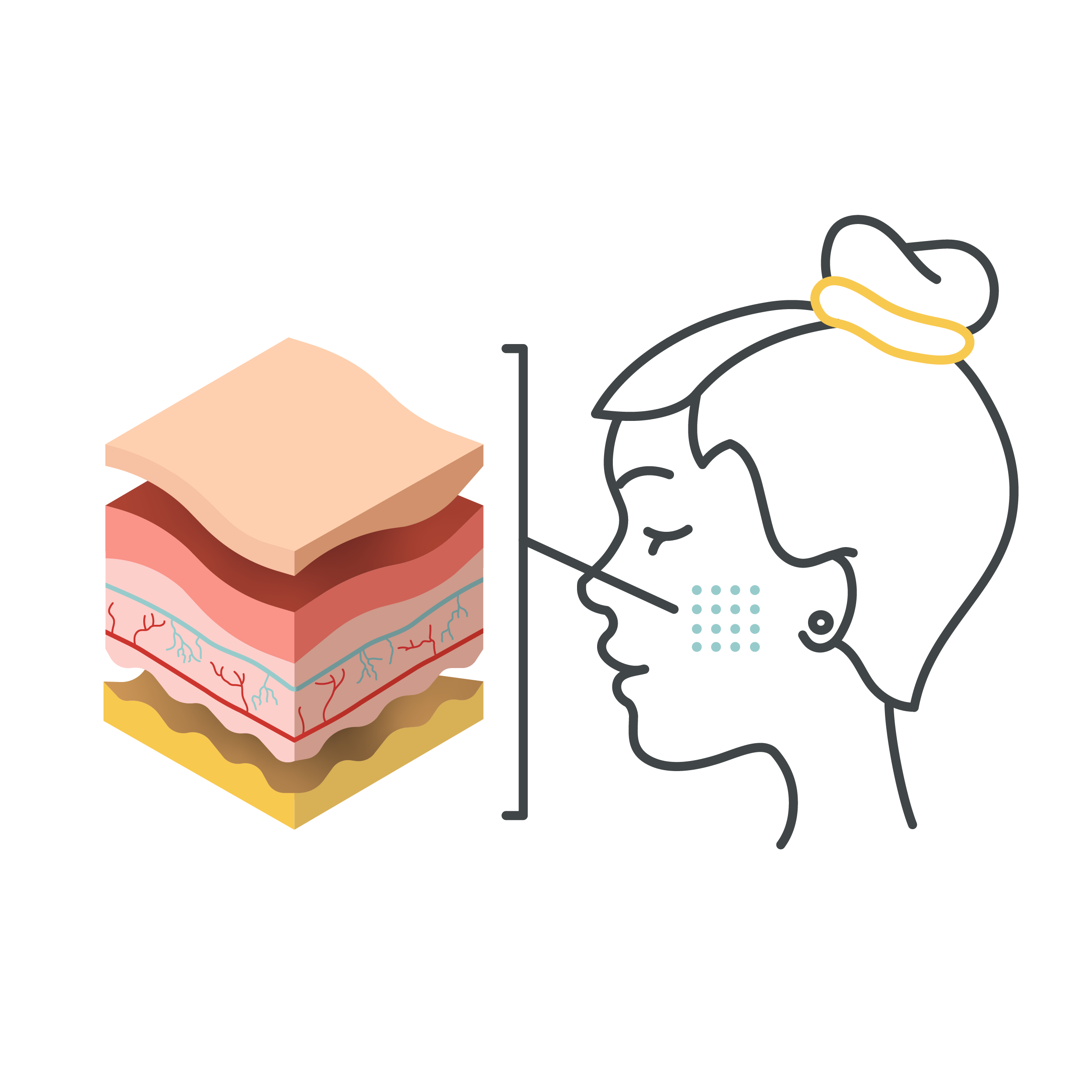
Understanding the Layers of the Skin and Effective Treatments for Each
Our skin is a complex organ made up of several layers, each playing a unique role in maintaining our overall skin health. To better understand how different medspa and plastic surgery treatments work, let’s explore the three main layers of the skin using the face as an example, and the most effective treatments targeting each layer.
Epidermis – The Skin’s Surface
The epidermis is the outermost layer of the skin. It acts as a protective barrier against environmental damage, including UV rays, pollution, and bacteria. This layer is where skin cells regenerate, and where issues like hyperpigmentation, dryness, and acne typically occur.
Recommended Treatments:
- Topical Skincare Products: Moisturizers, serums, and creams with ingredients like retinoids, hyaluronic acid, and vitamin C help nourish and protect the epidermis.
- Chemical Peels: Mild to moderate peels remove dead skin cells, promoting a smoother complexion.
- Microdermabrasion: Gently exfoliates the surface, reducing fine lines, uneven skin tone, and texture.
Dermis – The Supportive Layer
Beneath the epidermis lies the dermis, which contains collagen, elastin, and blood vessels. This layer is responsible for the skin’s elasticity, firmness, and hydration. Damage here leads to wrinkles, sagging, and loss of volume.
Recommended Treatments:
- Laser Skin Resurfacing: Stimulates collagen production, reducing fine lines, scars, and sun damage.
- Microneedling (with or without radiofrequency): Creates micro-injuries to encourage collagen regeneration.
- Injectables (Dermal Fillers): Restores lost volume and smooths out deep wrinkles.
- Light Therapy (LED): Reduces inflammation and promotes healing.
Subcutaneous Tissue – The Deep Foundation
This innermost layer consists of fat and connective tissue, which cushions the skin, provides insulation, and supports facial structure. Volume loss in this layer can cause hollow cheeks and sagging skin.
Recommended Treatments:
- Injectables (Fillers, Fat Grafting): Replenish lost volume for a more youthful contour.
- Ultrasound Therapy (e.g., Ultherapy): Tightens and lifts the skin by targeting deep tissue.
- Plastic Surgery: Procedures like facelifts address extensive sagging by repositioning and tightening underlying tissues.
Muscle Layer – The Facial Foundation
Though not technically a skin layer, facial muscles play a crucial role in facial structure and expressions. Muscle weakening or overactivity can contribute to wrinkles and sagging.
Recommended Treatments:
- Botox/Dysport: Temporarily relaxes muscles, reducing dynamic wrinkles like crow’s feet and forehead lines.
- Facial Exercises: Can help tone and strengthen muscles, though results are subtle compared to clinical treatments.
Customizing Your Treatment Plan
Effective skincare and cosmetic treatments require a personalized approach based on your skin type, age, and concerns. Consult with a licensed medspa provider or plastic surgeon to determine which combination of treatments can best address your skin health goals.
By understanding how each layer of the skin functions and the corresponding treatments, you can create a targeted plan to maintain youthful, healthy skin from the surface to the deeper foundational layers.



